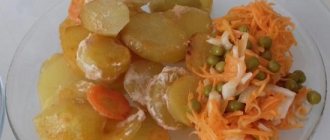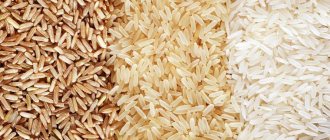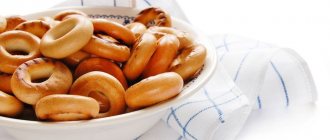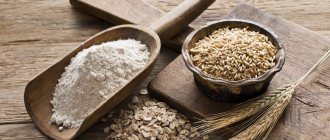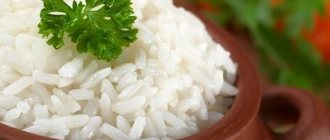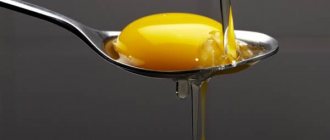Chicken broth is one of the ancient dishes, better known as “European penicillin”. A low-calorie decoction filled with vitamins and microelements helps restore the body after severe injuries, operations and illnesses. According to legend, the first broth was prepared in the 3rd millennium BC. done by accident.
A slave who stole a chicken threw the plucked carcass into a cauldron of boiling water to hide traces of the crime. The guards brought the caught thief, along with the broth that proved his guilt, to the pharaoh, who liked the unknown dish so much that he decided to have mercy on the slave, at the same time appointing him as one of his main cooks.
The medicinal properties of “European penicillin” were studied by the famous Avicenna , and the ancient Greeks, before the Olympic Games, always cooked broth from chicken sacrificed to the gods, thereby restoring their strength before important competitions.
Chicken broth: composition
This first dish of chicken broth contains so many useful substances that it becomes clear why it is included in the menu of those who have suffered a serious illness or surgery!
Just look at this list:
- selenium;
- copper;
- iron;
- magnesium;
- calcium;
- B vitamins.
And your body can get all this without much time or physical effort!
Harm that the product can cause to the body
In some diseases, the same extractive substances may not be beneficial, but, on the contrary, harmful. Such diseases may be:
- Stomach ulcer;
- Duodenal ulcer;
- Gastritis with increased production of hydrochloric acid;
- Gout;
- Acute pancreatitis;
- Inflammation of the lining of the esophagus;
- Urolithiasis disease;
If you have these or accompanying diseases, you should consult your doctor about using chicken broth and dishes made from it. In some cases, its use is contraindicated, in others it is limited or not recommended. In any case, a specialist should decide whether to establish a strict diet in this particular case.
Chicken broth: calories per 100 grams
Let us immediately note that to answer the question: “How many calories are in 100 grams of chicken broth?” - difficult.
After all, it is of great importance here:
- How many times have you drained the water when preparing a dish and poured in new water?
- With the lid closed or open, a decoction was prepared;
- How much water did you use for cooking;
- Which part of the chicken did you use to make the soup?
At the same time, the average energy value of chicken broth is 15 calories ! Approximately this amount is contained in 100 grams of the finished dish. But, in some cases, you may get much more calories than the number mentioned above. That is why it is so important, before you start losing weight with a decoction, to familiarize yourself with all the nuances of the product.
For example, broth made from fillet will have a minimum amount of calories. This is not surprising, because this meat does not contain fat. It only contains protein . The breast, together with the bone and the skin not removed, gives more fat, and therefore, the energy value of the finished dish will be higher. But from the wings and legs (or offal) you will get a very rich, but useless (literally) soup. Why? Yes, because in this case it will not contain the protein necessary for the human body.
How, haven’t you read our new article about the calorie content of boiled pasta? Follow the link and learn about the benefits and harms of this flour product in losing weight!
Broth for diet soup
Fats are the basis for the preparation of many dietary soups: cereal, vegetable and meat puree soups. Strong meat extracts are necessary for weakened patients to stimulate appetite, and mushroom extracts are used for reduced secretion of gastric juice.
Sea fish soup is useful for iodine deficiency in the body.
Vegetable decoctions include water-soluble vitamins and minerals, which are essential for hypertension, atherosclerosis, and obesity. Any broth does not contain enough nutrients necessary for the body. Therefore, they are not recommended for long-term consumption as independent dishes; soups are prepared on their basis. You can read about the calorie content of various soups in our publication.
Chicken Broth Calories: Nutrition Calculation Formula
Quite often we need to know what the nutritional value of the broth will be in the finished dish even before cooking begins.
This is where the universal formula comes in handy, which looks like this:
Calorie content of broth = energy value of other accompanying products (noodles, meat, liquid, herbs, etc.).
After thinking a little, the site “” simplified it for you and now it’s:
The energy value of the dish = the value of the chicken meat used for cooking x 0.9.
At the same time, we take the calorie content of purified water (and it is from such water that it is recommended to cook soup) as zero.
Directions
Chicken bouillon
IngredientsDirections
Table 1
| Products | Weight | Squirrels | Fats | Carbohydrates |
| Kura 2 cat. | 269 g | 57.03 | 22.06 | 0 |
| Carrot | 13 g | 0.17 | 0.01 | 0.9 |
| Parsley (root) | 10 g | 0.15 | 0.06 | 1.01 |
| Bulb onions | 10 g | 0.14 | 0.02 | 0.82 |
| Water | 1300 ml | 0 | 0 | 0 |
| Exit | 1000 | 57.49 | 22.15 | 2.73 |
Calories in chicken broth: how much meat should I put in the water?
For a liter of water and 1 kg of meat, the nutritional value of this dish will be 175 calories per 100 grams of product , calculating 0.9 x 195.
This is exactly the nutritional value of the first course you eat. The energy value of chicken broth in its pure form (without meat) is approximately 11 calories. Thus, you just need to subtract the nutritional value of the latter from the calculated energy value of a dish with meat.
Now you see that in fact, chicken broth is a fairly low-calorie product that can really help you lose weight without any unpleasant sensations, such as hunger, nausea, or headache. In addition, such a dish will nourish the body with useful substances and charge it with energy for the working day.
How to calculate the calorie content of broth with different ingredients
A simple way to calculate the nutritional value of the finished chicken broth is to multiply the nutritional value of the raw part of the carcass by a factor of 0.9.
To find out how many kilocalories are in a pure broth, subtract the calorie content of the boiled part from the calorie content of the raw part of the chicken, multiply the result by the mass of meat and divide by the volume of water.
If other ingredients were used, the formula will help calculate the nutritional value per 100 g: (kcal of raw meat + kcal of vegetables + ...) / (weight of meat (g) + weight of vegetables (g) + ... + volume of water (ml)).
Chicken broth: beneficial properties
- The so-called extractive substances contained in the meat of this bird are able to coat the gastric mucosa, which allows the soup to be absorbed by the body much faster. A decoction made from chicken fillet will give your liver a break from fatty foods. And dishes prepared from seeds and legs, according to research by scientists, strengthen joints and bone tissue.
- At the same time, regular consumption of this first dish provokes increased production of gastric juice (as you know, gastric enzymes can only work in an acidic environment), which is very useful for those who have digestive problems. It is worth noting that meat, on the contrary, absorbs acid.
- The substances contained in chicken broth prevent the formation of stagnation and blood clots in the circulatory system. They improve the lumen of the bronchi during colds and normalize blood glucose levels.
- Also, it is worth recalling that due to its low energy value, chicken soup is included in hundreds, or even thousands, of weight loss diets!
- Calcium, contained in abundance in the dish we are considering today, is necessary for the human body to tone muscles (for example, one of the most important muscles in the body, the heart muscle). In addition, this element acts as an activator of a certain group of enzymes, for example, the hormone insulin. It's no secret that calcium is the main element for teeth and bone tissue. It is also involved in the process of blood clotting. Able to prevent acidification of organs.
- Magnesium from chicken broth is also responsible for healthy teeth and bones. Together with calcium, it regulates muscle function. Important for conducting excitation along the nerve fiber. This element also strengthens the immune system and normalizes the functioning of the nervous system.
- The copper contained in the dish, together with iron, can prevent the formation of anemia and promote hematopoiesis. This chemical element is also incredibly useful for the digestive system.
- One of the most important chemicals in chicken soup is, of course, selenium, which is considered an anti-cancer element and has an active effect on the process of synthesis of red blood cells and proteins. Selenium has a beneficial effect on the functioning of the reproductive system, and is also part of hormones, the so-called enzymatic systems.
- B vitamins help deliver nutrients to the retina. They also normalize the performance of the nervous system. These substances are needed for the health of the gastrointestinal tract, for the process of hemoglobin formation.
The benefits of chicken broth and dishes prepared with it
As you know, chicken broth contains a large amount of extractives. When cooking meat, they mostly turn into broth. Having medicinal properties, they stimulate the production of gastric and bile juices, and also stimulate the pancreas.
Also, this decoction normalizes the process of digesting food and thus increases appetite. Due to its beneficial properties, it is allowed to be consumed quite early after operations performed on the abdominal organs and digestive system.
The dangers of chicken broth
In principle, speaking about the dangers of chicken broth, we can note only two negative points:
- Surely, many of our Dear Readers know that sometimes poultry farms raise birds using additional artificial growth stimulants. As a rule, chickens are deliberately kept in cramped cages and not allowed to walk so that their meat is soft. Of course, all harmful substances contained in meat pass into the broth during cooking.
- As we mentioned above, regular consumption of chicken broth can increase stomach acidity. For this reason, people who have ulcers or suffer from high acidity should not include this dish in their diet.
Is it possible to have chicken broth while losing weight?
For those who decide to include chicken broth in their menu because they want to lose a couple of extra pounds, we recommend following the advice of a nutritionist:
- Carefully remove all skin.
- Trim the fat from the carcass;
- Do not pre-cook the meat;
- Place poultry meat only in cold water, because then when heated, the water will draw out harmful substances from it;
- After about 20 minutes, it is recommended to drain the water along with the foam formed in it, because it now contains fat and cadaveric poisons;
- After draining the liquid, rinse the carcass under running cold water.
- Next, immerse it in purified water for cooking;
- Soups are usually cooked not in the first, but in the third water;
- By adding onions, you reduce calories;
- If you want the lightest possible soup, add more water;
- You should not cook meat on the bone for a long time, otherwise the joint will begin to secrete gelatin.
Chicken broth is a low-calorie , but quite filling dish. It’s hard to even imagine how many important processes in our body are responsible for the microelements, vitamins, and amino acids that make up the meat of this bird. This tasty, aromatic, healthy decoction is the key to your excellent health and the health of your loved ones!
Tell us in the comments about your favorite recipes, share your impressions of what you read - your opinion is important to us! And, of course, stay healthy and beautiful with the “Calorie content of foods” section!
Useful articles about calories:
- Boiled rice: benefits and harms, composition
- Bell pepper for weight loss
- Boiled chicken breast
- Watermelon for weight loss
- Apples for weight loss
Calorie tables for foods used in preparing first courses
Meat, meat by-products and poultry
| Meat, meat by-products and poultry | Calorie content per 100 g (kcal) | Meat, meat by-products and poultry | Calorie content per 100 g (kcal) |
| Fatty lamb | 316 | Pork liver | 107 |
| Lamb meat | 206 | Lamb kidneys | 76 |
| Ham | 365 | Beef kidneys | 59 |
| Beef udder | 172 | Pork kidneys | 79 |
| Boiled lean beef | 110 | Beef sausages | 215 |
| Fried beef | 170 | Pork sausages | 332 |
| Fatty boiled beef | 205 | Fried pork | 275 |
| Beef stew | 180 | Pork is fatty | 390 |
| Brisket | 300 | Pork lean | 315 |
| Goose | 490 | Stewed lean pork | 245 |
| Turkey | 205 | Pork chop | 265 |
| Boiled sausage | 250 | Pork skinny | 259 |
| Diabetic sausage | 254 | Pork stew | 350 |
| Krakow sausage | 382 | Lamb heart | 76 |
| Amateur sausage | 291 | Beef heart | 87 |
| Moscow sausage | 463 | Pork heart | 89 |
| Sausage separate | 193 | Sausages | 266 |
| Semi-smoked sausage | 380 | Roasted veal | 150 |
| Ukrainian sausage | 404 | Fatty veal | 148 |
| horsemeat | 143 | Boiled veal | 115 |
| Korean | 469 | Skinny veal | 89 |
| Rabbit | 183 | Duck | 345 |
| Boiled chicken | 135 | Chickens | 146 |
| Fried chicken | 210 | Chicken egg (1 pc.) | 157 |
| Boiled fatty chicken | 195 | Beef tongue | 165 |
| Lean boiled chicken | 135 | Pork tongue | 208 |
| Beef brains | 123 | Chicken raw | 189 |
| Lamb liver | 100 | Chicken thigh raw | 181 |
| Beef liver | 87 | Chicken breast raw | 111 |
| Chicken wings raw | 186 |
Fish and seafood
| Fish and seafood | Calorie content per 100 g (kcal) | Fish and seafood | Calorie content per 100 g (kcal) |
| Gobies | 144 | Cod liver | 610 |
| Pink salmon | 147 | Blue whiting | 72 |
| Chum salmon caviar | 245 | Cancers | 75 |
| Red caviar | 256 | Saber fish | 110 |
| Breakout bream caviar | 142 | Caspian fisherman | 98 |
| Pollock caviar | 130 | Carp | 121 |
| Granular caviar | 250 | Saira | 182 |
| Sturgeon caviar punched | 235 | Salaka | 119 |
| Black caviar (beluga, sturgeon) | 280 | Stellate sturgeon | 137 |
| Squid | 74 | Herring | 246 |
| Flounder | 87 | Atlantic herring | 57 |
| Fried flounder | 75 | Salted herring | 261 |
| Smoked flounder | 90 | Sardines in oil | 275 |
| crucian carp | 87 | Pickled herring | 155 |
| Boiled carp | 95 | Smoked herring | 218 |
| Fried carp | 145 | Fried herring | 180 |
| Chum salmon | 138 | Salmon | 219 |
| Canned fish in oil | 320 | Whitefish | 143 |
| Canned fish in its own juice | 120 | Mackerel | 153 |
| Smelt | 90 | Som | 143 |
| Crabs | 68 | Horse mackerel | 119 |
| Shrimps | 97 | Sterlet | 122 |
| Icy | 74 | Zander | 83 |
| Bream | 105 | Boiled pike perch | 30 |
| Tench | 40 | Trepang | 37 |
| Fried salmon | 145 | Cod | 75 |
| Smoked salmon | 385 | Boiled cod | 44 |
| Macrurus | 60 | Tuna | 101 |
| Lamprey | 165 | Tuna in oil | 300 |
| Pollock | 69 | coal fish | 157 |
| capelin | 157 | Acne | 332 |
| Sea kale | 17 | Sea eel | 93 |
| Navaga | 73 | Boiled trout | 45 |
| Burbot | 80 | Hake | 86 |
| Marbled notothenia | 155 | Sprats in oil | 250 |
| Sea bass | 117 | Pike | 81 |
| River perch | 82 | Fried pike | 95 |
| Sturgeon | 163 | Boiled pike | 45 |
| Halibut | 102 | Ide | 81 |
Milk and dairy products
| Milk and dairy products | Calorie content per 100 g (kcal) | Milk and dairy products | Calorie content per 100 g (kcal) |
| Acidophilus (3.2% fat) | 58 | Sour cream 10% fat | 113 |
| Cow cheese | 260 | Sour cream 20% fat | 204 |
| Yogurt (1.5%) | 51 | 30% fat | 293 |
| Full fat kefir | 60 | Dutch cheese | 357 |
| Kefir (1% fat) | 38 | Lambert cheese | 377 |
| Low-fat kefir | 28 | Parmesan cheese | 330 |
| Curd mass | 345 | Processed cheese | 501 |
| Acidophilus milk | 83 | Poshekhonsky cheese | 446 |
| Milk (3.2% fat) | 58 | Russian cheese | 371 |
| Milk (1.5% fat) | 44 | Sausage cheese | 268 |
| Whole cow's milk | 68 | Swiss cheese | 433 |
| Skim milk | 31 | Curd cheeses | 380 |
| Condensed milk | 137 | Cottage cheese (18% fat) | 226 |
| Condensed milk with sugar | 329 | Fat cottage cheese | 223 |
| Whole milk powder | 485 | Low-fat cottage cheese | 80 |
| Ice cream | 220 | Cottage cheese semi-fat | 153 |
| Curdled milk | 59 | Cottage cheese with sour cream | 260 |
| Ryazhenka | 85 | Cream 20% fat | 205 |
| Cream 10% fat | 118 |
Vegetables, herbs and mushrooms
| Vegetables greens mushrooms | Calorie content per 100 g (kcal) | Vegetables greens mushrooms | Calorie content per 100 g (kcal) |
| Eggplant | 28 | Leek | 41 |
| Swede | 38 | Bulb onions | 43 |
| Fresh porcini mushrooms | 25 | Carrot | 33 |
| Dried porcini mushrooms | 211 | Fresh cucumbers | 15 |
| Boiled mushrooms | 25 | Pickles | 8 |
| Mushrooms in sour cream | 230 | Olives | 519 |
| Fried mushrooms | 165 | Parsnip | 38 |
| Fresh boletus mushrooms | 32 | Sweet green pepper | 19 |
| Fresh boletus mushrooms | 31 | Sweet red pepper | 28 |
| Fresh russula mushrooms | 15 | Parsley (greens) | 47 |
| Honey mushrooms | 20 | Parsley (root) | 50 |
| boletus | 30 | Tomatoes | 20 |
| Boletus | 30 | Rhubarb | 16 |
| Green pea | 75 | Radish | 16 |
| Green bean | 33 | Radish | 25 |
| Zucchini | 18 | Turnip | 23 |
| White cabbage | 23 | Salad | 11 |
| Brussels sprouts | 12 | Beet | 40 |
| Sauerkraut | 28 | Pumpkin | 20 |
| Red cabbage | 27 | Dill | 30 |
| Cauliflower | 18 | Horseradish | 49 |
| Jacket potatoes | 96 | Cheremsha | 35 |
| Boiled potatoes | 120 | Garlic | 60 |
| Baked potatoes | 215 | Spinach | 16 |
| Green onion | 18 | Sorrel | 27 |
Cereals and legumes
| Cereals, pulses and legumes | Calorie content per 100 g (kcal) | Cereals, pulses and legumes | Calorie content per 100 g (kcal) |
| Beans | 58 | Wheat groats | 352 |
| Hercules | 371 | Barley groats | 343 |
| Green peas | 280 | Cornflakes | 369 |
| Peas | 337 | Pasta | 350 |
| Whole peas | 316 | Cereals | 305 |
| Wheat flour 1st grade | 346 | Millet | 350 |
| Wheat flour 2 grades | 346 | Millet | 351 |
| Premium wheat flour | 346 | Whole wheat | 262 |
| Rye flour | 347 | Rice | 337 |
| Cocoa powder | 375 | Rye | 330 |
| Buckwheat | 346 | Soybeans | 395 |
| Corn grits | 344 | Oatmeal | 374 |
| Semolina | 340 | Beans | 328 |
| Oatmeal | 374 | Lentils | 310 |
| Pearl barley | 342 | Barley flakes | 315 |
Oils, fats, eggs and sauces
| Oils, fats, eggs and sauces | Calorie content per 100 g (kcal) | Oils, fats, eggs and sauces | Calorie content per 100 g (kcal) |
| Rendered beef fat | 871 | Corn oil | 900 |
| Rendered animal fat | 897 | Olive oil | 824 |
| Pork fat | 871 | Sunflower oil | 900 |
| Rendered fat | 930 | Vegetable oil | 899 |
| Pork fat | 821 | Butter | 750 |
| Ketchup | 80 | Soybean oil | 900 |
| Mayonnaise | 625 | Nut butter | 570 |
| Light mayonnaise | 260 | Ghee | 885 |
| Milk margarine | 745 | Protein powder | 337 |
| Creamy margarine | 745 | Dry yolk | 624 |
| Sandwich margarine | 670 | Egg powder | 544 |
| Margarine for baking | 675 | Chicken egg | 157 |
| Quail egg | 167 |
What not to add
When preparing chicken breast broth, many people add potatoes or noodles, believing that without this the broth is too lean and insatiable.
But the calorie content of a prepared treat, for example, with potatoes, will definitely exceed 100 kcal. Even if there are very few of these potatoes.
If you decide to go on a diet, exclude noodles and potatoes from your diet. At least as frequently consumed dishes. Be content with the broth (of course, we are talking about one meal per day). It’s better, for example, to cook a couple of small croutons for it or boil carrots, beets, or eat sun-dried tomatoes. This will be much more useful when losing weight.
